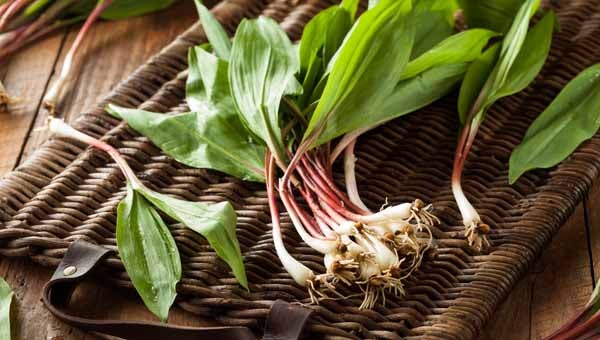Ramps! Spring Mountain Greens, Wild Harvested
Published 7:21 pm Wednesday, April 6, 2016

The mountains of Southern Appalachia have a huge biodiversity. Often we don’t associate the act of gathering native plants and wild greens as an act of “farming.” I more often use the word “foraging.”
For the Cherokee of our region, foraging native foods in early spring was one way to supplement nutrition into the diet of mostly stored foods between the growing seasons of winter and summer. For the past 8,000 years, the Cherokee foraged and used native plants and animal life both for food and medicine.
In April, off the women of the Cherokee tribes would go. They foraged wild greens that common gardeners might call weeds, e.g. ground cherries, poke-salad, lamb’s quarters, strawberries, vetch, and nightshade. They would gather wild berries, nuts, fruits, roots, and herbs from forests, swamps, estuaries, and grasslands.
Traditionally, a wide variety of wild greens were collected. But today, fewer varieties are collected due to loss of habitat and access to traditional collecting areas, which are now controlled by entities such as the National Park Service and private landholders. The current position of the National Park Service is that many plants, such as the wild ramp, are in danger of being over-harvested.
However, Cherokee locals maintain that they have traditionally harvested within what are now park boundaries for 8,000 years, always using sustainable harvesting techniques. Their stories, and some local food foragers from the Madison County area, have inspired me each spring to set off on a search for mountain ramps. One year I only had to go as far as North Asheville, where an abandoned gravel parking lot was overrun with them!
Ramps are a member of the Allium genus, the lily family, like wild leeks and wild garlic. Referred to as Easter onions, they are a welcome sign of spring from March to May, found on walks up hollers and through valleys above 3,000 feet. We’ve gathered them, leaves and roots with bulbs, in buckeye flats or under the bare branches of poplar, oak, and sometimes sugar maple trees. Since almost all ramps are harvested from wild patches, folks are encouraged to leave some bulbs so that the patch can replenish itself.
You can braise them, pickle them, or grill them. Keep the lily leaf and bulb intact. Wash them thoroughly, to remove all sand, coat in a quality cooking oil and kosher salt and grill, braise, or pickle. You can also enjoy them raw with sea salt. My latest favorite way to prepare ramps is to wrap them around venison tenderloin or locally raised and non-cured bacon strips.
With the venison tenderloin, you wrap the ramps, then wrap some bacon to hold down the ramps! Roast them both until the bacon has crisped on all sides. The ramps inside create an oniony, garlicky, butter paste that has basted them both in the cooking process.

